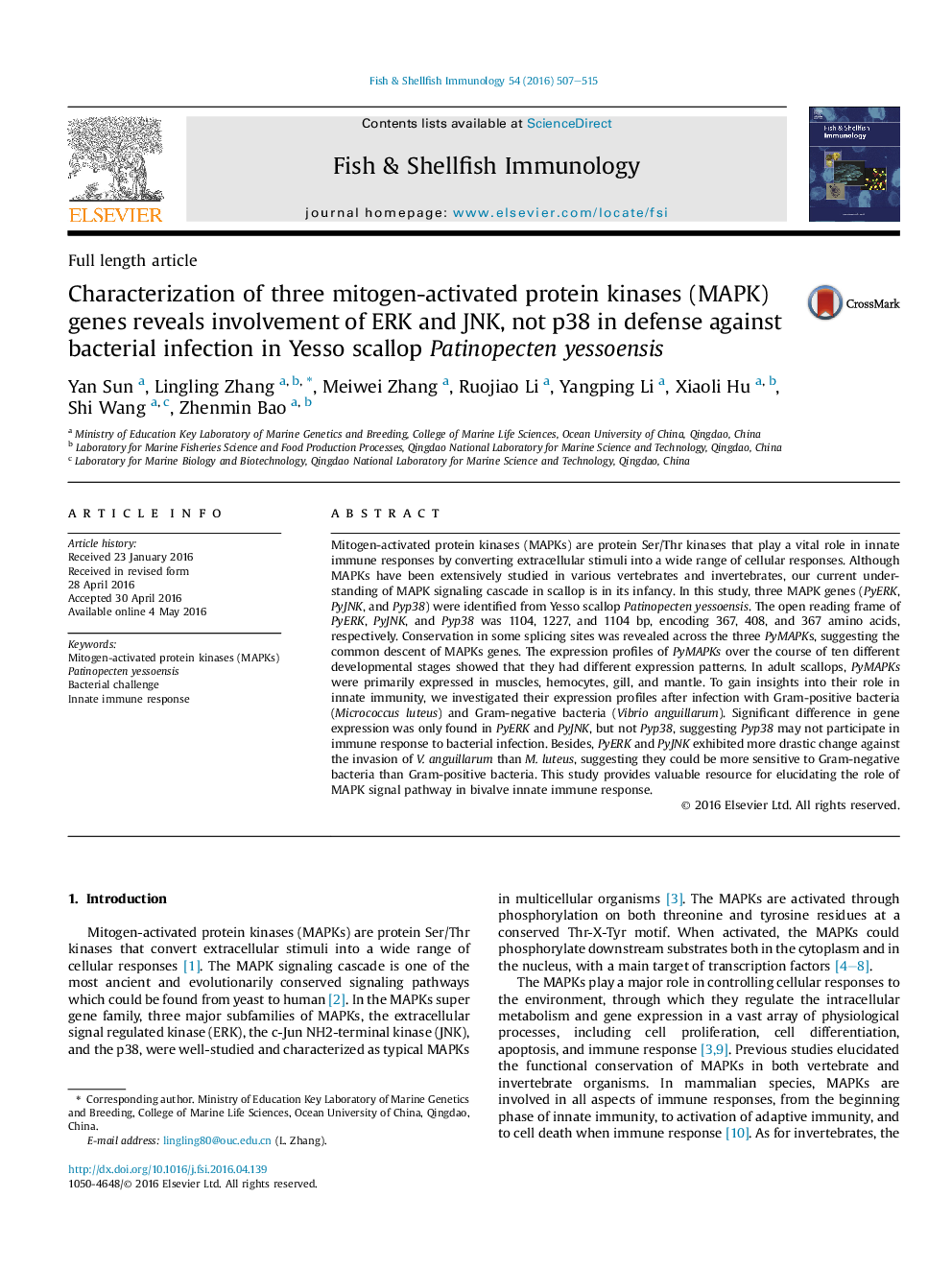| کد مقاله | کد نشریه | سال انتشار | مقاله انگلیسی | نسخه تمام متن |
|---|---|---|---|---|
| 2430642 | 1553620 | 2016 | 9 صفحه PDF | دانلود رایگان |

• Three MAPK genes (PyERK, PyJNK and Pyp38) were identified from Patinopecten yessoensis.
• Conservation in some splicing sites was revealed across the three PyMAPKs.
• Only PyERK and PyJNK participate in immune response against G+ and G− bacteria.
Mitogen-activated protein kinases (MAPKs) are protein Ser/Thr kinases that play a vital role in innate immune responses by converting extracellular stimuli into a wide range of cellular responses. Although MAPKs have been extensively studied in various vertebrates and invertebrates, our current understanding of MAPK signaling cascade in scallop is in its infancy. In this study, three MAPK genes (PyERK, PyJNK, and Pyp38) were identified from Yesso scallop Patinopecten yessoensis. The open reading frame of PyERK, PyJNK, and Pyp38 was 1104, 1227, and 1104 bp, encoding 367, 408, and 367 amino acids, respectively. Conservation in some splicing sites was revealed across the three PyMAPKs, suggesting the common descent of MAPKs genes. The expression profiles of PyMAPKs over the course of ten different developmental stages showed that they had different expression patterns. In adult scallops, PyMAPKs were primarily expressed in muscles, hemocytes, gill, and mantle. To gain insights into their role in innate immunity, we investigated their expression profiles after infection with Gram-positive bacteria (Micrococcus luteus) and Gram-negative bacteria (Vibrio anguillarum). Significant difference in gene expression was only found in PyERK and PyJNK, but not Pyp38, suggesting Pyp38 may not participate in immune response to bacterial infection. Besides, PyERK and PyJNK exhibited more drastic change against the invasion of V. anguillarum than M. luteus, suggesting they could be more sensitive to Gram-negative bacteria than Gram-positive bacteria. This study provides valuable resource for elucidating the role of MAPK signal pathway in bivalve innate immune response.
Figure optionsDownload as PowerPoint slide
Journal: Fish & Shellfish Immunology - Volume 54, July 2016, Pages 507–515